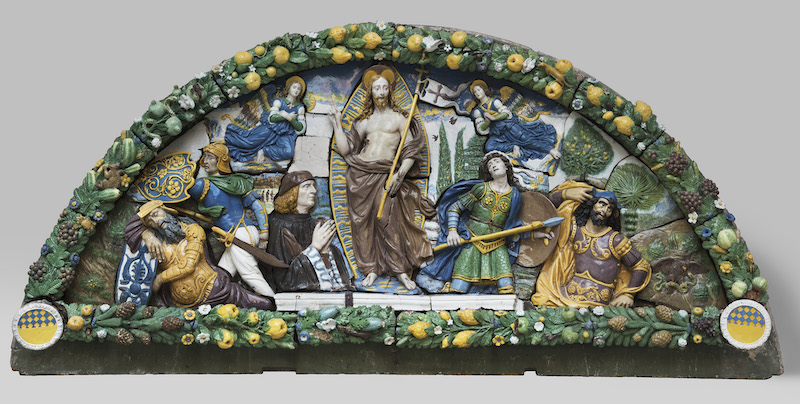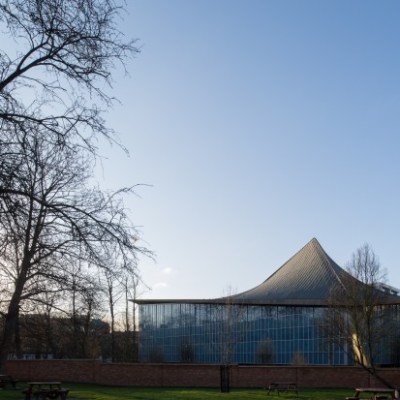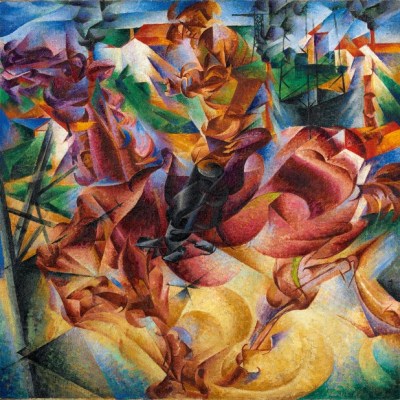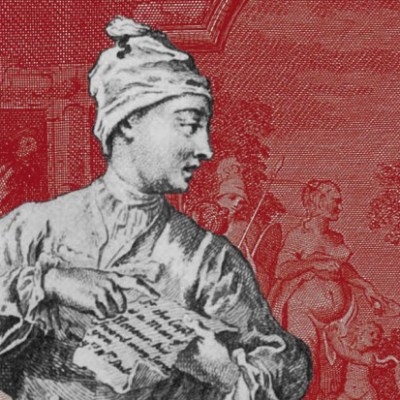‘I suppose nothing brings the real air of a Tuscan town so vividly to mind as those pieces of blue and white earthenware,’ Walter Pater observed in 1888 when writing about the work of the Della Robbia family. For Pater their sculptures were ‘like fragments of the milky sky itself, fallen into the cool streets, and breaking into the darkened churches’. The immediately recognisable works with their white and cerulean colours have become synonymous with Florence and Tuscany since the mid 15th century, when Luca della Robbia (1400–82) invented a new type of glazed terracotta (described in Italian as terra invetriata). This novel and durable material allowed Della Robbia and his family to produce a large number of works that decorated public and private spaces in Tuscany and throughout Europe. Giorgio Vasari commented that ‘not only Italy is filled with their works, but they have also sent them to different parts of the world’.
Prudence (c. 1475), Andrea della Robbia. Metropolitan Museum of Art, New York
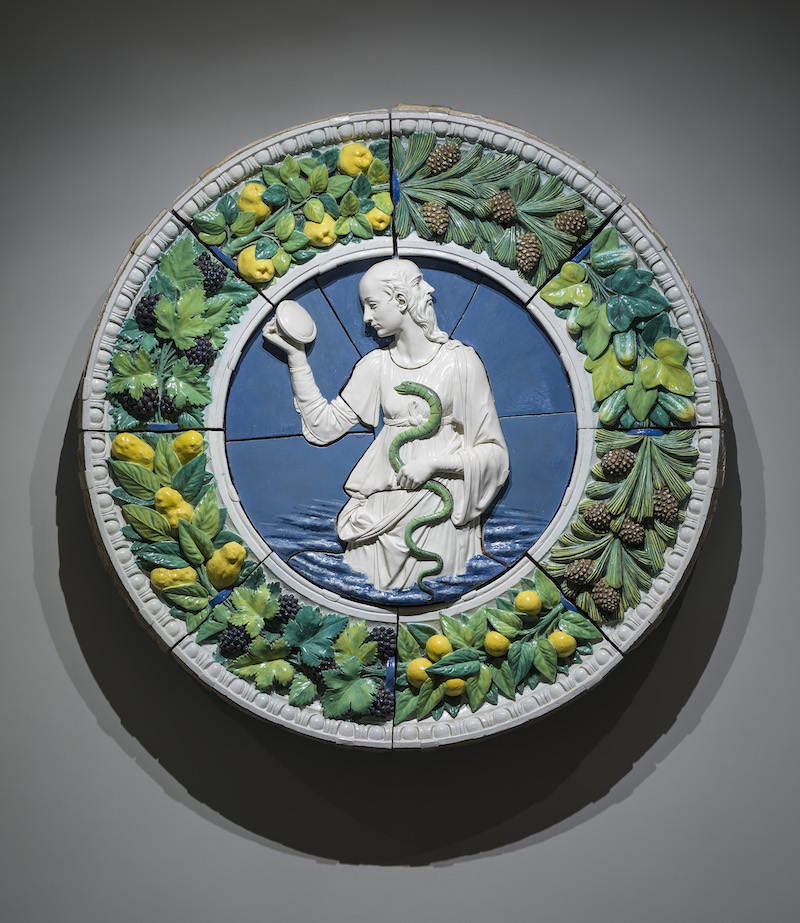
Luca collaborated with his nephew Andrea (1435–1525), and Andrea in turn with his sons Giovanni, Luca, and Girolamo. Other artists, such as Bertoldo di Giovanni and Giovanni Francesco Rustici, experimented with terra invetriata, and Benedetto Buglioni, with his adopted son Santi, established a workshop that rivalled that of the Della Robbia and used the same technique. Visitors to Tuscany have long marvelled at the ubiquitous sculptures, known as Robbiane, which have also been acquired by museums worldwide since the 19th century. Astounding examples of this art, based on the prodigious combination of earth, glass, and fire, can still be seen in the locations for which they were created: most notably at the Ospedale degli Innocenti and in the Cardinal of Portugal and Pazzi family chapels in Florence, and the remote Franciscan sanctuary at La Verna. So abundant and recognisable are such works in Tuscany that they have become almost invisible, part of a Renaissance world that today mainly decorates church leaflets and first-communion invitation cards.
However, in her sensitively curated exhibition currently at the Museum of Fine Arts in Boston (and then at the National Gallery of Art in Washington), Marietta Cambareri makes us look at the Della Robbias’ work in a new light. The first exhibition on the subject in the United States brings together about 50 works by the Della Robbia and Buglioni workshops. It is a careful and well-chosen selection of works mainly from American public and private collections. Extraordinary loans from Italy are part of the checklist, including the charming bust of a boy by Andrea from the Bargello, and Luca’s Madonna and Child from the Oratory of San Tommaso d’Aquino in Florence. The loan of one of Luca’s absolute masterpieces, his moving Visitation from the church of San Giovanni Fuorcivitas in Pistoia, is most exciting. The sculpture, like the other objects in the exhibition, is beautifully installed and perceptively lit. Throughout the show, even when confronted by well-known Della Robbia works, you feel as if you are seeing them for the first time.
The Visitation (c. 1445), Luca della Robbia. Church of San Giovanni Fuorcivitas, Pistoia
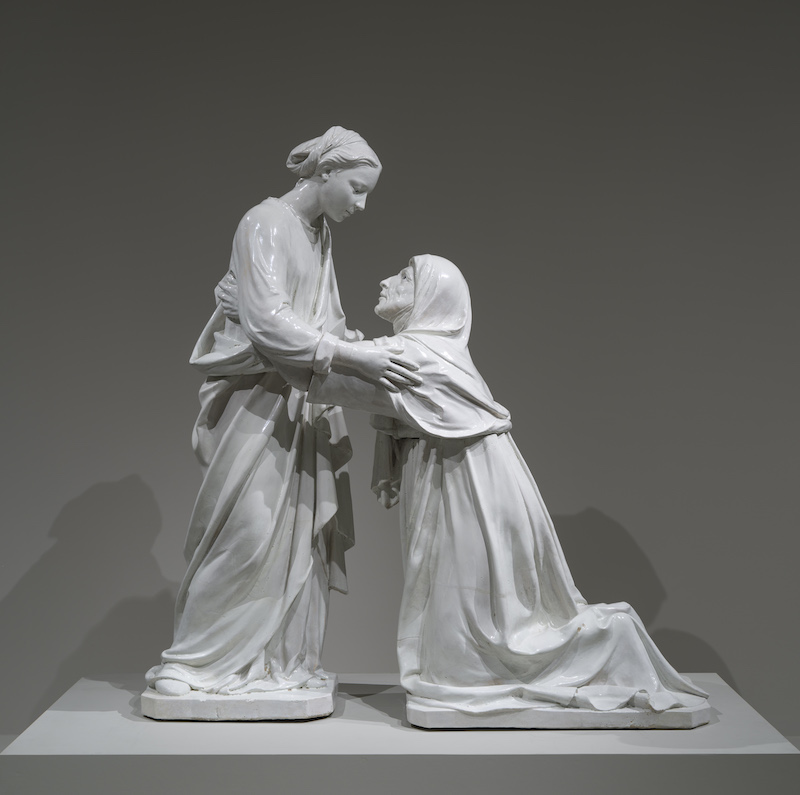
The exhibition is based on thoughtful scholarly research and a number of conservation campaigns have brought works back to their original glory. A complex restoration project at the Brooklyn Museum has allowed for the Resurrection by Giovanni della Robbia – originally from the villa of the Antinori family outside Florence – to be studied properly. The Objects Conservation Department at the Metropolitan Museum has worked on one of the most beautiful objects in the exhibition, Andrea’s tondo of Prudence. Conservators present this work with its astonishing garland of lemons, oranges, grapes, pinecones, and cucumbers in a newly reconfigured order. It is not known where this relief came from, but it would be wonderful to be able to see it one day with its three other companions: Faith (in the Gulbenkian Museum in Lisbon) and Temperance and Justice (both in the Château d’Écouen).
Della Robbia’s glazed terracotta was designed to withstand diverse and extreme weather conditions. Vasari reported that his works allowed for ‘every aquatic and damp place to be aggrandised with beauty and without much expense’. To this day, most of Della Robbia’s work is still beautifully preserved. An illuminating essay by Abigail Hykin in the exhibition catalogue provides new and important information about the workshop’s technique. Artists continued to work with glazed terracotta until the mid 16th century, when Robbiane went swiftly out of fashion. A last moment of glory is provided by Santi Buglioni’s almost life-size freestanding Franciscan saints, among the most impressive and surprising objects in the exhibition.
Bust of a Young Boy (c. 1475), Andrea della Robbia. Museo Nazionale del Bargello, Florence
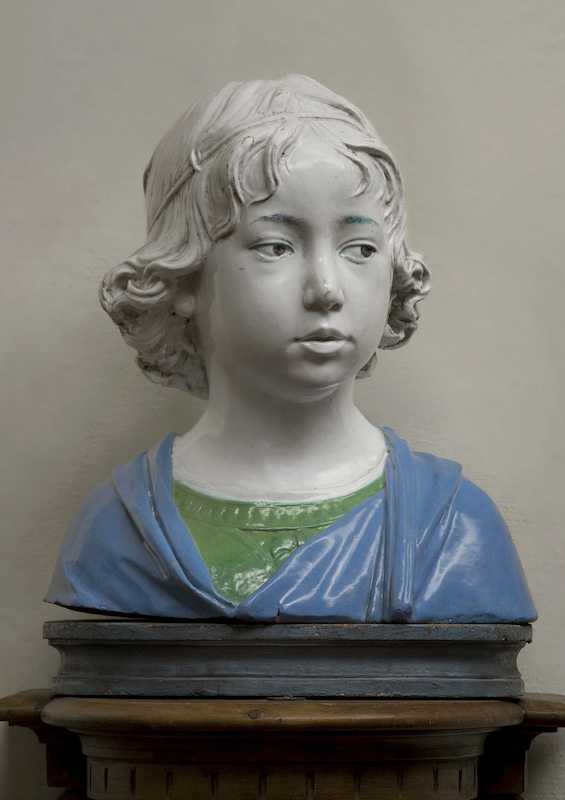
John Ruskin, who owned a relief of the Adoration of the Child by Andrea (now in the National Gallery of Art in Washington and displayed in the exhibition), wrote in 1846 about Della Robbia’s newfound fame in the 19th century: ‘Luca is brightly Tuscan, with the dignity of a Greek; he has English simplicity, French grace, Italian devotion – and is, I think, delightful to the truest lovers of art in all nations and all ranks.’ This superb exhibition makes us look at terra invetriata through the eyes of 15th-century Tuscans, but also through those of later admirers. Andrea della Robbia would have been particularly proud to know that a copy of one of his roundels for La Verna was installed in the church of St Mark’s-in-the-Bowery in New York, where in the 1920s it provided the background for a new form of liturgical ceremony: the ‘Della Robbia Eurythmic Dance Ritual’.
‘Della Robbia: Sculpting with Color in Renaissance Florence’ is at the Museum of Fine Arts, Boston, until 4 December.
From the October issue of Apollo: preview and subscribe here
